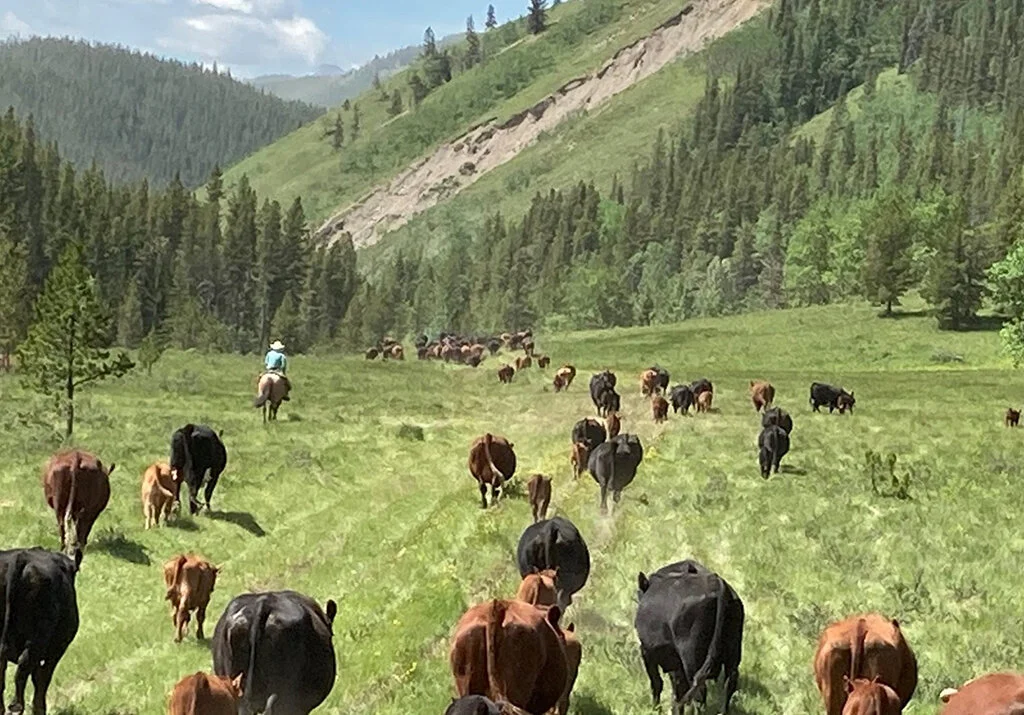If you drive the Icefields Parkway through the Canadian Rockies, you'll pass multiple turquoise-coloured lakes that are popular with tourists for taking photos. The lakes get their iconic colour from rock flour, which is similar in appearance to baker's flour used for making bread. Rock flour is made from glaciers grinding rocks into powder, which can take thousands of years.
What the decline of mountain snow cover means for Canada
This winter brought a healthy snowpack to many mountain peaks in North America. California experienced record snow, at times burying communities and ski hills and in Canada, skiers and snowboarders enjoyed the powder this season, with British Columbia experiencing a flush of late-season snow putting snowpacks right around normal. But despite this snowy winter in the mountains, climate change is taking its toll on our slopes.
Iconic glaciers of Kilimanjaro, Yellowstone to disappear by 2050 due to global warming: UN
Some of the world's most famous glaciers, including in the Dolomites in Italy, the Yosemite and Yellowstone parks in the United States, and Mount Kilimanjaro in Tanzania are set to disappear by 2050 due to global warming — whatever the temperature rise scenario, according to a UNESCO report. UNESCO, the United Nations cultural agency, monitors some 18,600 glaciers across 50 of its World Heritage sites and said that glaciers in one-third of World Heritage sites will disappear by 2050 regardless of the applied climate scenario.
State of glaciers in the Canadian Rockies is 'dire right now,' expert warns
A Canadian professor is warning many of the iconic glaciers in the Canadian Rockies will be gone in the coming decades due to climate change. John Pomeroy is the Canada research chair in water resources and climate change at the University of Saskatchewan. He says the state of the glaciers in the Canadian Rockies is "dire right now." "We've lost hundreds of them already, just over the last few decades, and we'll be losing most of the rest over this century - including over most peoples' lifetimes."
Grad student's art connects water science to the people
Science, art, and the great outdoors. Megan Leung describes these three things as her greatest passions in life. Growing up in Mohkinstsis — on the traditional territories of the Treaty 7 region, located in the Canadian Rockies of Southern Alberta — the hydrologist, artist, and MSc geography student at the University of Calgary has always been in awe of her surroundings. It’s a love that inspired both her art and her academic path. For years though, Leung felt those passions were completely divergent parts of her life.
Climate change causing lakes in Canadian Rockies to lose their famous turquoise lustre, says ecologist
New research from the University of Alberta says the Canadian Rockies may be losing one of their most iconic features — those brilliant turquoise alpine lakes. "This summer the heat domes in Western Canada really have accelerated the rate of melting of the glaciers in the … Rockies," said professor of aquatic ecology Rolf Vinebrooke on CBC Radio's Daybreak South Tuesday. Vinebrooke explained that the lakes contain glacial flour, a sediment from rocks that slowly makes its way into the water through erosion. But as the glaciers melt at faster rates than ever before, less of the meltwater contains the rock flour, which intercepts sunlight and gives the lakes their milky turquoise luster.
Scientists warn glacier in Canadian Rockies is slipping away before their eyes at unprecedented rate
A summer of unprecedented heat has not been kind to the iconic ice in the Canadian Rockies. According to researchers, glaciers are melting at a rate never seen before. “It’s horrific to see this almost unrecognizable from one year ago, two years ago, let alone 10-20 years ago,“ said Dr. John Pomeroy, a hydrologist and director of Global Water Futures. Pomeroy first stepped foot on Banff National Parks Peyto Glacier in 2008. He came to better understand the hydrology of the famous glacier. In the early 1900s, it once sprawled three and half kilometres further than it does today, down the valley resting near the turquoise water of Peyto Lake
The Fate of the Canadian Rockies May Rest on This Decision
Next month, a provincial-federal joint review panel on the massive Grassy Mountain Coal Project in the southern Canadian Rockies will table a decision that could determine the fate of Alberta’s famed eastern slopes. If the panel gives the contentious metallurgical coal mine a green light, the doors could open for other existing proposals that could industrialize nearly 1,000 square kilometres of the Rockies and threaten the region’s scarce water supplies.









